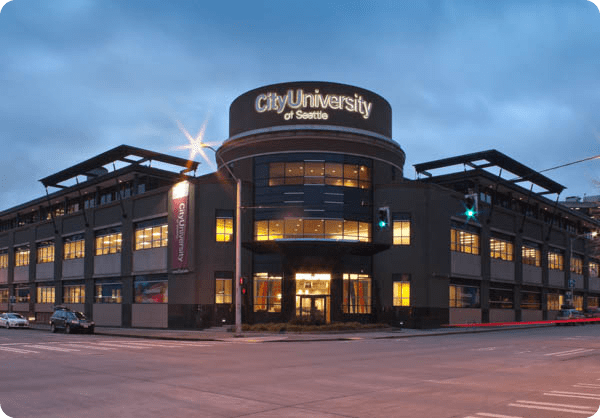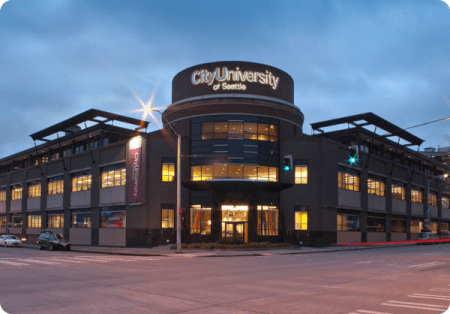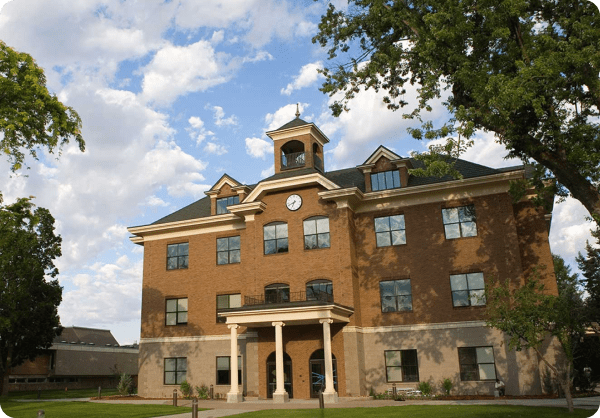Higher education
Private, not-for-profit university with more than 40,000 graduates worldwide
1,500+ employees
Easier image management
Supporting a growing campus
One of the nation’s first universities to address the needs of working adults, City University of Seattle (City U) offers instruction in nearly 20 locations across the globe and serves an enrollment base of more than 3,500 students and counting. The institution prides itself on being an innovator, expanding its offerings to include an online principal certification program in the fall of 2010. This is the only program of its kind offered by a state-approved institution.
But this kind of growth has prompted new challenges. As it continues to attract more students — and employees — the institution’s IT support team is charged with the task of keeping more systems up to date and running more smoothly than ever before.
As such, City U leadership was seeking ways to simplify and accelerate its currently costly and time-consuming system imaging process as quickly and cost efficiently as possible. By switching from Symantec Ghost to SmartDeploy, the university has given its technicians faster, easier, and more intuitive ways to modify and update system images — saving technicians time and frustration.

Updating system images locally consumed time
The process for modifying system images with Symantec Ghost was a multistep endeavor, requiring a technician to boot into a ghost machine, make changes to the image, and then redeploy it. This could take several hours at a time.
“We found that the tools included in the solution we had been using were not particularly user-friendly,” says Desktop Services Manager Kirk Shattuck. “It takes a week of trial and error just to learn how to create boot disks, and only one of our techs knows how to do this. On top of that, you have to ensure all of the drivers are there or the system won’t communicate with the server at all.”
On top of these challenges, technicians were growing increasingly exasperated due to the fact that they had to dedicate hardware and infrastructure to the imaging process. As Shattuck puts it, “We had to update all of our images locally, which took quite a while. We couldn’t just inject security updates or updated script versions when we needed to. In fact, sometimes we’d push out new images the day before, update it, and pull it to avoid having to wait so long. We would have preferred to make our updates in a virtual environment, but that wasn’t supported with the tools that we were using.”
With all of these issues in mind, the institution knew it needed to find a solution — one that wouldn’t put undue strain on its limited budget.

Speeding up with streamlined, single-image management
That’s when City U turned to SmartDeploy Enterprise, the first hardware-independent imaging tool that uses boot-time driver-injection. This system integrates seamlessly into existing management infrastructures, includes powerful COM API scripting capabilities to customize nearly every point in the deployment process, and requires only a single image for each build regardless of the number and variety of devices being managed. Because SmartDeploy Enterprise features a simple, straightforward imaging process, the system has enabled City U’s technicians to be more productive and efficient than ever before. As Shattuck points out, “The steps required to deploy updated images are drastically reduced. I would estimate that we can update and deploy images 25% faster than before.”
“SmartDeploy is not just remarkably easy to use and cost effective, but it also includes Platform Packs, which eliminate the need to perform wholesale updates across several images over physical media.”
— Kirk Shattuck, Desktop Services Manager at City University of Seattle
More flexible and powerful imaging
Because SmartDeploy offers hardware-independent imaging, it provides true separation between software content, such as the operating system and applications. It also provides platform support, including devices, drivers, and special system control buttons such as volume control. With Platform Packs, users can package device drivers, as well as platform-specific software, in less time, and separately create a single master software image. This means that users can simply add device drivers and hardware support files to Platform Packs, which are then automatically injected into the image at the time of deployment. And it’s all based on the exact make, model, and operating system being deployed, rather than having to inject hardware-related components for many device types directly into master images.
For City U, this has dramatically reduced the time and steps required to deploy updates to system images, particularly since many of the packs are included as part of SmartDeploy’s integrated support services. “SmartDeploy is not just remarkably easy to use and cost effective, but it also includes Platform Packs, which eliminate the need to perform wholesale updates across several images over physical media,” says Shattuck. “Our master image can be used indefinitely.”

Simplifying and accelerating image deployment
This ability to update system images from a virtual environment has reduced frustration and saved time for City U’s technical support team. For large updates, system imaging was particularly cumbersome, requiring a seemingly endless process of updating each system image manually. With SmartDeploy’s delta images, however, software changes can be released across systems to remote network endpoints while working with existing master images. City U notes that this combination of virtual deployment and using delta images has reduced both the file size and the time required to distribute updates throughout a network. As a result, its technicians can provide updates from one location, regardless of physical boundaries, bandwidth constraints, or connection integrity.
“I can’t say enough about the enormous benefits of being able to manage desktops and deploy system image updates from a virtual machine,” says Shattuck. “The added benefit of leveraging deltas provides us with a comprehensive and robust solution that has helped us improve the whole imaging process — from creation to deployment — ten times over.” While SmartDeploy is enterprise-ready, its ease of use makes it optimal for mid-market organizations such as City U. Users can capture an image from the version of Windows they are working on or perform direct file-to-file imaging on a local workstation by using the Virtual Disk Component — in just three simple steps.
“There are a whole slew of steps we used to have to go through to update system images with our previous solution, and it could take several hours for each image,” Shattuck remarks. “It was a major pain point. But with SmartDeploy, which includes intuitive wizards, that time is dramatically reduced.”

Inexpensive, yet more effective system imaging
SmartDeploy has not only helped the institution cut down on labor costs by 60% through faster, easier imaging processes, but it's also given IT staff more time to focus on other projects. “Using SmartDeploy has enabled our entire tech team to easily update images in less time,” says Shattuck. “It’s giving us more time to devote our attention to proactive projects — and that’s exactly what we need to best support our growing institution.”
Read more case studies
Ready to get started?
See how easy device management can be. Try SmartDeployfree for 15 days — no credit card required.










